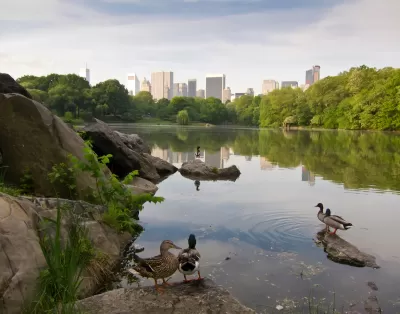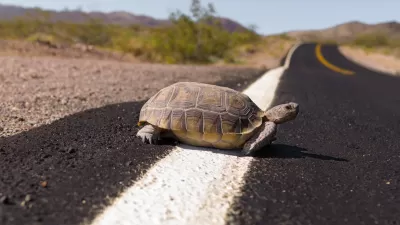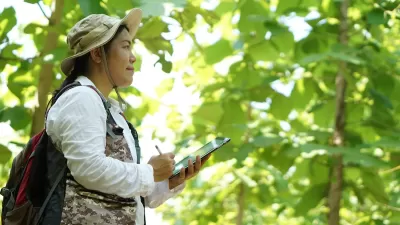A wide-ranging research study highlights the various qualities that make animal species living in urban environments thrive—and how biodiversity improves the health of our cities.

New research from the University of Melbourne identifies four distinct sets of traits that help urban wildlife adapt and survive in environments that seem hostile to animals. Writing in Wired, Maria Paula Escobar-Tello describes the findings. “The researchers looked at four animal characteristics—diet, body size, mobility, and reproductive strategy—that can vary according to what a city has to offer and how flexible a species can be.”
The study, which compiled data from 379 global cities, found that animal species fell into different categories. Some, the “mobile generalists,” do keep their options for diet and resting places open and move around frequently as needed. Others, termed “central place foragers,” nest and sleep in the same place, but forage for food over a broad range.
Then there are the “site specialists,” the study adds. “Reptiles and amphibians adopt a different strategy again: Faced with scarcer food, higher vulnerability to predators, road accidents, and pollution, they respond to urbanization by specializing their diets, moving around smaller areas, and reducing the size of their clutches.”
Why is biodiversity important for cities at all? “Greater biodiversity provides knock-on benefits, what are known as ‘ecosystem services,’” the article explains. A greater diversity of species can maintain healthier ecosystems, from microorganisms that clean the soil to local wildlife that keep disease-spreading pests like mosquitoes in check. “If you look at the traits animals are adopting to survive in urban environments, you can see how cities could be modified to become more habitable to a wider variety of species.”
FULL STORY: Why Some Animals Thrive in Cities

Alabama: Trump Terminates Settlements for Black Communities Harmed By Raw Sewage
Trump deemed the landmark civil rights agreement “illegal DEI and environmental justice policy.”

Study: Maui’s Plan to Convert Vacation Rentals to Long-Term Housing Could Cause Nearly $1 Billion Economic Loss
The plan would reduce visitor accommodation by 25% resulting in 1,900 jobs lost.

Why Should We Subsidize Public Transportation?
Many public transit agencies face financial stress due to rising costs, declining fare revenue, and declining subsidies. Transit advocates must provide a strong business case for increasing public transit funding.

Paris Bike Boom Leads to Steep Drop in Air Pollution
The French city’s air quality has improved dramatically in the past 20 years, coinciding with a growth in cycling.

Why Housing Costs More to Build in California Than in Texas
Hard costs like labor and materials combined with ‘soft’ costs such as permitting make building in the San Francisco Bay Area almost three times as costly as in Texas cities.

San Diego County Sees a Rise in Urban Coyotes
San Diego County experiences a rise in urban coyotes, as sightings become prevalent throughout its urban neighbourhoods and surrounding areas.
Urban Design for Planners 1: Software Tools
This six-course series explores essential urban design concepts using open source software and equips planners with the tools they need to participate fully in the urban design process.
Planning for Universal Design
Learn the tools for implementing Universal Design in planning regulations.
Smith Gee Studio
Alamo Area Metropolitan Planning Organization
City of Santa Clarita
Institute for Housing and Urban Development Studies (IHS)
City of Grandview
Harvard GSD Executive Education
Toledo-Lucas County Plan Commissions
Salt Lake City
NYU Wagner Graduate School of Public Service





























